Spring 2021
Start Talking Early About Drugs and Alcohol
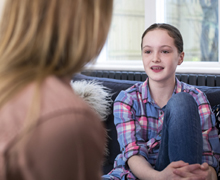 As parents who love our kids and want to protect them, it’s our duty to equip them to stay away from drugs and alcohol. Honest, open conversations help our kids develop the attitudes, skills and confidence needed to make smart choices — even when their peers are not.
As parents who love our kids and want to protect them, it’s our duty to equip them to stay away from drugs and alcohol. Honest, open conversations help our kids develop the attitudes, skills and confidence needed to make smart choices — even when their peers are not.
When should we start these conversations? For most kids, around fourth or fifth grade is appropriate — or even earlier, if the situation feels right. Then, as kids move into middle school, these talks can become more detailed, and more frequent. Talking about marijuana is a good place to start. Because it’s legal for adults in Washington, marijuana is easy to get. And unfortunately, some forms of marijuana — vaping and edibles in particular — are quick and simple to ingest. They’re also easy to conceal, both at home and at school. Start your discussion by learning what your child knows. Do they know marijuana is illegal for anyone under age 21? Do they understand that it’s addictive? While no one ever expects to become addicted, kids who start using marijuana before age 14 are four times more likely than others to become addicted by adulthood. The only sure way to prevent addiction is to never try it in the first place.
Keep in mind that you’re not lecturing. You’re sharing knowledge and ideas. Help your child practice saying no. Role-play social situations where they’re offered drugs or alcohol, and what they can say to strongly refuse. Be sure they know it’s OK to walk away from any situation — and call you for a ride, or help getting one, if needed.
It’s also important to be clear about your expectations. The message can be as simple as “We want you to do well in school, stay healthy, and have lots of opportunities now and in the future. Dependence and addiction have the power to ruin your entire life. That’s why we have a family rule against you even trying drugs and alcohol.”
Of course, it’s vital that parents themselves model healthy coping skills. And everyone on the parenting team must be consistent with rules and messages, even if they live in separate households.
By using our influence in a positive way — and keeping the conversations going — we can help our kids chart their course and pursue their dreams.
Visit StartTalkingNow.org to learn more.
Prevent TV and Furniture Tip-Overs
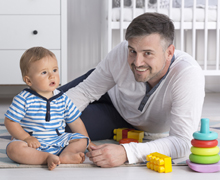 Protecting children from dangerous TV and furniture tip-overs is a crucial part of keeping them safe. Every day in the U.S., falling TVs send 10 kids to the emergency room; every three weeks a child dies from these injuries.
Protecting children from dangerous TV and furniture tip-overs is a crucial part of keeping them safe. Every day in the U.S., falling TVs send 10 kids to the emergency room; every three weeks a child dies from these injuries.
Prevent a tragedy from happening by mounting flat-panel TVs to the wall. (Older, box-style TVs should be placed on low, stable surfaces.) Anchor furniture like bookshelves, cabinets and dressers to the wall with anti-tip brackets, braces or wall straps. Don’t allow a child of any age to climb up on furniture. Avoid placing TV remotes, toys or other items where kids might be tempted to climb up or reach for them. Also, install stops on dresser drawers to prevent them from being pulled all the way out.
Learn more about preventing TV and furniture tip-overs in your home.
End Nighttime Wetting with a Consistent Plan
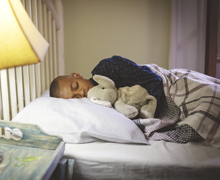 Many adults can still remember the embarrassment they felt as kids after wetting the bed. Nighttime wetting is common, and is generally considered a problem when it happens more than twice a month after age 6 or so.
Many adults can still remember the embarrassment they felt as kids after wetting the bed. Nighttime wetting is common, and is generally considered a problem when it happens more than twice a month after age 6 or so.
In some cases, a child has never been consistently dry at night; this usually happens when the body makes too much urine and the child doesn’t wake up when the bladder is full. In other cases, a child who was consistently dry at night starts wetting again; the cause here may be physical, emotional, or due to a change in their sleep patterns. Usually, children stop wetting at night as they grow older without any treatment.
Never shame or blame your child, but do check with their doctor if you’re concerned. Your child’s doctor may help you develop a night-training program, which will likely include holding back liquids before bedtime, ensuring the bladder is empty before sleep, and waking the child during the night to go pee in the bathroom.
Spotting Signs of a Mental-Health Problem
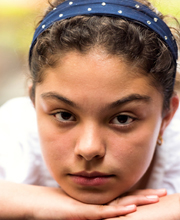 Childhood and adolescence are full of big changes, and it’s normal for kids to experience some emotional ups and downs. This is even more true during COVID-19. But at least one in five kids will have a diagnosable mental-health problem that requires treatment. It’s very important that parents stay tuned-in to their child, and keep communications open, so they can better detect early signs of emotional problems.
Childhood and adolescence are full of big changes, and it’s normal for kids to experience some emotional ups and downs. This is even more true during COVID-19. But at least one in five kids will have a diagnosable mental-health problem that requires treatment. It’s very important that parents stay tuned-in to their child, and keep communications open, so they can better detect early signs of emotional problems.
What are some indicators that a child is dealing with mental-health issues? Common signs include feeling very sad or withdrawn for two or more weeks; severe mood swings; changes in eating or sleeping habits; disinterest in personal hygiene; or sudden, overwhelming fear or anxiety for no apparent reason. If a child shows one or more of these signs, talk with them and with their doctor right away. Don’t ignore the signs.
Parents might worry that bringing up the subject of mental health with their child may somehow make the problem worse — or make an imagined problem somehow come true. This isn’t the case. Kids who are struggling typically feel relieved to have the topic out in the open. It’s important that parents are calm and compassionate, and that they reassure their child that there’s no reason to feel embarrassment or shame. Emphasize that this is a solvable problem, and that you will do everything you can to help them feel better. Keep in mind that even tweens and teens who won’t open up fully to a parent will usually do so with a doctor or another mental-health expert.
Early action and effective treatment can help your child get back on track, continue their healthy development, and feel hopeful about their future.
Visit our mental health resource hub to learn more.
Life Jackets
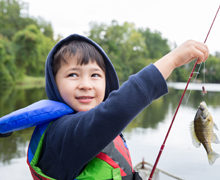 Fishing and boating season is here, and swim season is on the way. Now’s the time to double-check that your family’s life jackets are U.S. Coast Guard-approved, that they are in good condition and that they fit properly.
Fishing and boating season is here, and swim season is on the way. Now’s the time to double-check that your family’s life jackets are U.S. Coast Guard-approved, that they are in good condition and that they fit properly.
For kids, the fit depends on their current size and weight: never buy a life jacket to ‘grow into.’ When fastened, a life jacket should be snug yet comfortable. To test the fit, lift your child by the shoulders of the jacket: their chin and ears should not slip down into the jacket. For younger children, choose a life jacket with a collar for head support, and a strap between the legs. And of course, remember that kids must always be supervised by an adult when in or near the water.
Get more water safety tips for your family.
Treating Ankle Sprains
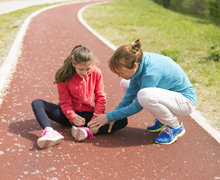 Ankle sprains are one of the most common injuries for active kids. A sprain happens when ligaments in the ankle stretch or tear — usually due to twisting or turning. To treat an ankle sprain at home, follow the PRICE steps: Protection, Rest, Ice, Compression and Elevation. Protect the sprain with a brace, splint or boot. Rest from activities that cause pain or limping. Ice the ankle for the first one to three days, three to five times a day for 15 to 20 minutes each time. Compress the ankle with an elastic bandage. Elevate the ankle above the heart level by lying down with pillows under the foot. Call your child’s doctor for help deciding if they should be seen or if you can continue treating their injury at home.
Ankle sprains are one of the most common injuries for active kids. A sprain happens when ligaments in the ankle stretch or tear — usually due to twisting or turning. To treat an ankle sprain at home, follow the PRICE steps: Protection, Rest, Ice, Compression and Elevation. Protect the sprain with a brace, splint or boot. Rest from activities that cause pain or limping. Ice the ankle for the first one to three days, three to five times a day for 15 to 20 minutes each time. Compress the ankle with an elastic bandage. Elevate the ankle above the heart level by lying down with pillows under the foot. Call your child’s doctor for help deciding if they should be seen or if you can continue treating their injury at home.
This handout includes exercises to try after an ankle sprain.
Prevent Lead Poisoning
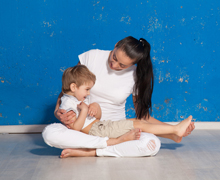 Exposure to lead can harm brain growth in young children, especially those 6 and younger. Normally, a child’s body absorbs essential nutrients that help it make healthy bones, muscles and brain connections. But when lead is available, the body can absorb it instead, causing permanent and often serious health problems. The most common source of this heavy metal is lead-based paint in older homes. If your toddler or preschooler regularly spends time in a house built before 1950 — or one built before 1978 that has had recent repairs or improvements — ask your doctor for a blood-lead screening test. Learn more about sources of lead, and how to prevent lead poisoning.
Exposure to lead can harm brain growth in young children, especially those 6 and younger. Normally, a child’s body absorbs essential nutrients that help it make healthy bones, muscles and brain connections. But when lead is available, the body can absorb it instead, causing permanent and often serious health problems. The most common source of this heavy metal is lead-based paint in older homes. If your toddler or preschooler regularly spends time in a house built before 1950 — or one built before 1978 that has had recent repairs or improvements — ask your doctor for a blood-lead screening test. Learn more about sources of lead, and how to prevent lead poisoning.
Quick Tip
Keep aiming for five servings of fruits and vegetables a day. Eat what’s in season or buy frozen, dried and canned items to cut down on cost.


